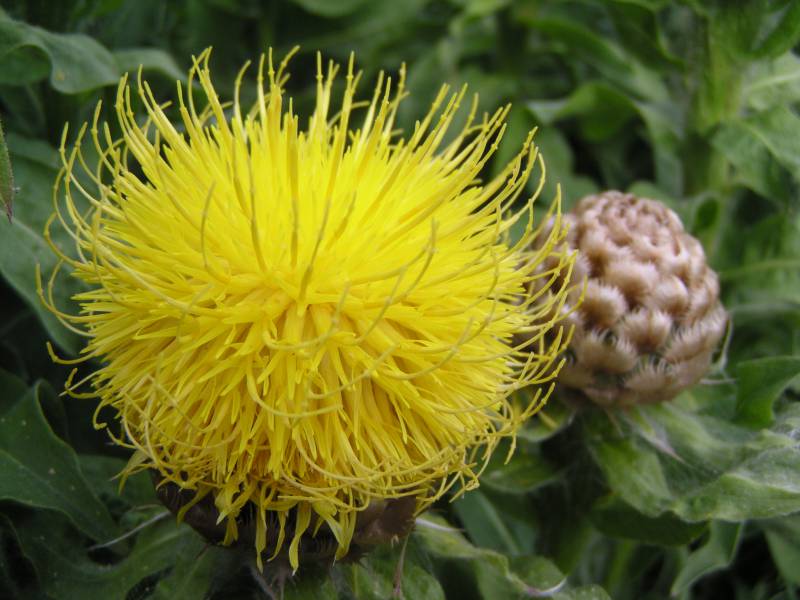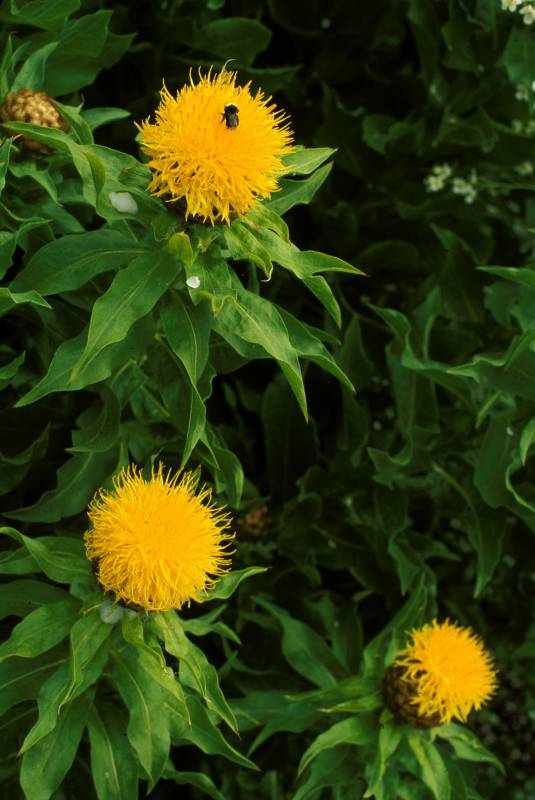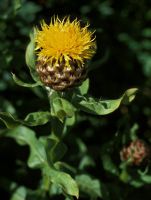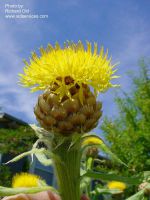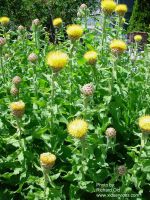Distribution: Occurring east of the Cascades crest in Washington; central Washington to Montana, also in Colorado, and Great Lakes region to northeastern North America.
Habitat: Roadsides and meadows.
Flowers: June-September
Origin: Introduced from Eurasia
Growth Duration: Perennial
Conservation Status: Not of concern
Pollination: Bees, flies, beetles, wasps
Perennial herbs, the several stems 50-170 cm. tall, erect, sparingly branched, thinly woolly.
Leaves alternate, the basal and lower cauline petiolate, becoming sessile upward; leaf blades dotted with glands, oblanceolate to narrowly ovate, 10-30 cm. long, entire or shallowly dentate.
Heads borne singly, sessile, closely subtended by clusters of reduced leaves; involucres ovoid to hemispheric, 25-35 mm. long, the involucral bracts glabrous, ovate to broadly lanceolate, pale green, with abruptly spreading appendages, brown, scarious, 1-2 cm. wide; flowers many, yellow, the outer sterile corollas slightly longer than the central, fertile corollas; pappus of flattened bristles 5-8 mm. long.
Achenes 7-8 mm. long.
Publication: Sp. Pl. 3: 2298. 1803.
PNW Herbaria: Specimen records of Centaurea macrocephala in the Consortium of Pacific Northwest Herbaria database.
WA Flora Checklist: Centaurea macrocephala checklist entry.
OregonFlora: Centaurea macrocephala information.
E-Flora BC: Centaurea macrocephala atlas page.
CalPhotos: Centaurea macrocephala photos.
USDA Plants: Centaurea macrocephala information.

